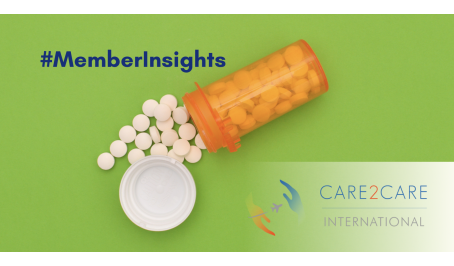Prescription Drugs: How to Lower the Cost of a Healthcare Plan’s Second Largest Expense
This #MemberInsights article is authored by Care2Care International.

Prescription drugs represent now between 20 and 30% of an average health plan’s costs, and their costs continue to rise steeply, year after year. How to lower these costs is the focus of today’s paper.
- Get the data
The plan sponsor will need to get access to their health plans data, which is not always an easy task. Fully insured employers, for example, find themselves with the carrier or the broker negotiating with the PBM. The employer gets a “bundled” service with no access to detailed data on the different parts of the plan. But recently, plan sponsors covering more than 100 lives were reminded that they in fact have an obligation, as a plan fiduciary, to gain this access. For smaller organizations, below 100 lives, there are alternative ways to get the data. Let us know if you are in that situation and we’ll help you find the right way.
- Choose a partner
What criteria to use to choose the right PBM partner?
Cost has to be the key component. How to calculate the real cost since it’s largely impacted by the multiple revenue streams perceived by PBMs as shown in the chart below?
Too often, employers continue to listen to PBMs boasting about the high rebates they gain from the drug manufacturers. Today, most PBM pass these rebates to their client, while they are not always fully disclosing other sources of revenue.
That is why we recommend one, simple criteria: the total net cost of claims and fees billed to the plan divided by the number of plan members: the PMPM (Per Member Per Month) cost.
- The contractual aspects
Employers are typically in one of two situations: fully insured or self-insured, depending mainly on the headcount of the company:
The self-insured will choose a partner with the help of a broker or consultant, possibly through a RFP process.
The insured will have a partner chosen by the insurer; he can also “carve out” the pharmacy benefits and ask the help of a specialized consultant.
Whatever the situation, the keys to performing pharmacy benefits services are the following:
- a transparent PBM (which implies Auditability)
- 100% pass-through
- A formulary based on science, regularly reviewed by clinical experts
- a large set of cost-control tools: Prior Authorizations, step therapies, no wasteful drugs, Reference Based Pricing, to name a few
- The issue with Specialty drugs
Specialty drugs account for roughly 50% of these costs while being used by as little as 2% of a plan’s covered people! Adding to the problem, the 3 big PBMs, sharing about 75% of the market, own specialty pharmacies!
An employer’s job is not to manage its employee's health plan and what we present here might seem a daunting task for most of them. By choosing the right partner, they will see that the efforts pay off.
As a benchmark to compare with your own plan numbers, here is a graph showing what kind of average PMPM cost we have been able to achieve over the years.

